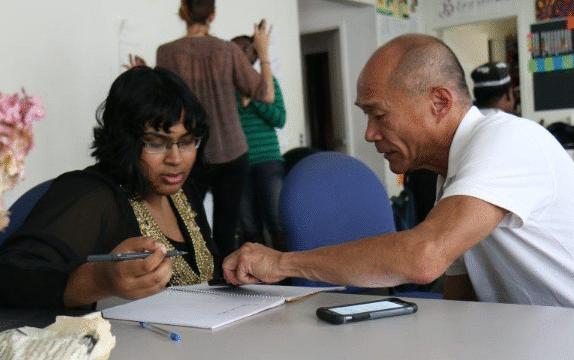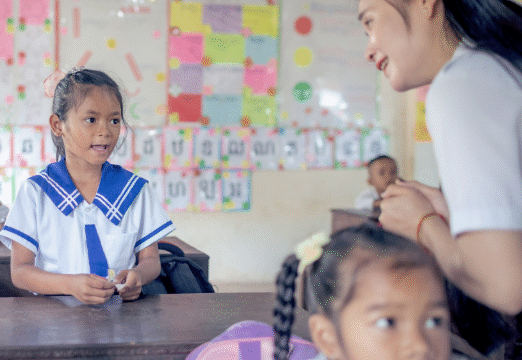Education is meant to be a doorway that opens opportunities
for every child. Yet for many years, children with special
needs were often left behind, excluded from classrooms,
or given limited opportunities to learn alongside their peers. Thankfully, the world is shifting toward an inclusive approach where special needs education is not seen as separate, but as a vital part of the broader learning community. Inclusion means that all children, regardless of their abilities or challenges, learn together in the same classrooms, share experiences, and benefit from each other’s strengths.
At the heart of inclusive education lies the belief that every child can learn and that differences should be celebrated rather than viewed as barriers. This philosophy encourages schools to design learning environments where children with disabilities, learning difficulties, or developmental differences are not segregated, but are instead supported in ways that allow them to thrive. Teachers, families, and communities all play a role in making inclusion a reality, ensuring that children feel welcomed and valued.
Creating inclusive classrooms requires more than just placing students with special needs in mainstream settings. It involves intentional planning, appropriate resources, and supportive teaching strategies. Teachers may use differentiated instruction, which means tailoring lessons to meet diverse learning styles, or assistive technologies, such as speech-to-text software or visual aids, to help children engage with content. These tools not only support students with special needs but also enhance learning for everyone in the classroom.
Social interaction is another vital aspect of inclusion. When children of all abilities learn together, they build friendships and gain empathy. A child who may struggle with reading might shine in art, while another with physical challenges could be a gifted storyteller. Recognizing these strengths allows classmates to appreciate one another as whole individuals, not defined solely by their difficulties. Over time, this fosters a classroom culture where kindness, respect, and teamwork become natural values.
Families often express that inclusive education helps their children feel like they belong. For many parents, the dream is not just academic success, but also the chance for their children to play, laugh, and grow alongside peers. When schools embrace inclusion, they send a powerful message to families: your child matters, and your child’s presence enriches our community. This sense of belonging can be transformative for both the child and their family.
Teachers are at the heart of making inclusion work. They are often the ones who identify ways to adapt lessons, provide encouragement, and create an atmosphere where all students feel safe to try and learn. Training in inclusive education equips teachers with skills to manage diverse classrooms, use flexible teaching methods, and collaborate with specialists such as speech therapists or occupational therapists. While these efforts require commitment, they lead to classrooms that are more creative, dynamic, and effective for everyone.
Communities also play a significant role. Schools do not exist in isolation; they reflect the values of the societies around them. When communities embrace the idea that diversity is a strength, inclusive education becomes easier to achieve. Volunteers, local organizations, and even peers without disabilities can contribute by offering support, raising awareness, and celebrating the progress of students. A school that values inclusion often becomes a hub of acceptance, influencing how people beyond the school walls treat those with differences.
Despite its many benefits, inclusion does come with challenges. Teachers may feel overwhelmed without adequate resources, or schools may struggle to provide necessary support staff. In some cases, outdated attitudes still create barriers, as some people believe that children with special needs should be educated separately. Overcoming these challenges requires investment, training, and ongoing conversations about the value of inclusion. Governments, education systems, and policymakers must ensure that funding, training, and support services are available so schools can succeed in this mission.
The long-term benefits of inclusive education extend far beyond childhood. Children who grow up in inclusive classrooms often carry those values into adulthood, becoming more compassionate coworkers, leaders, and community members. Students with special needs who experience inclusion are more likely to develop self-confidence, independence, and social networks that support them later in life. By ensuring all children have access to quality education, societies move closer to equality and fairness for all.
Technology is also opening new doors for inclusion. Digital learning tools, adaptive software, and online platforms allow students with various needs to participate more fully. For example, a child who struggles with handwriting may use a tablet to complete assignments, while a student with hearing difficulties can benefit from captioned videos. Technology, when combined with thoughtful teaching, makes classrooms more adaptable and ensures that no child is left behind.
Inclusive education is not just about helping children with special needs succeed academically; it is about reshaping how we view education itself. Instead of seeing education as a one-size-fits-all system, inclusion recognizes that diversity in learning styles, abilities, and experiences makes classrooms richer. Every child, whether gifted, challenged, or somewhere in between, contributes to the collective learning journey.
The journey toward full inclusion is ongoing. Many schools worldwide are making significant progress, while others are still learning how to adapt. What remains clear is that inclusion benefits everyone. It teaches students that differences are normal, it provides opportunities for collaboration, and it strengthens the fabric of society. When schools commit to inclusion, they prepare future generations to live in a world that values equity, acceptance, and shared growth.
In the end, special needs education is not about labeling children or separating them. It is about creating opportunities for all students to sit side by side, share the same lessons, and grow together as equals. Inclusion for all is not just an educational strategy; it is a reflection of a more caring and just society. By embracing it, we take a step closer to ensuring that every child, regardless of ability, has the chance to learn, dream, and thrive.






